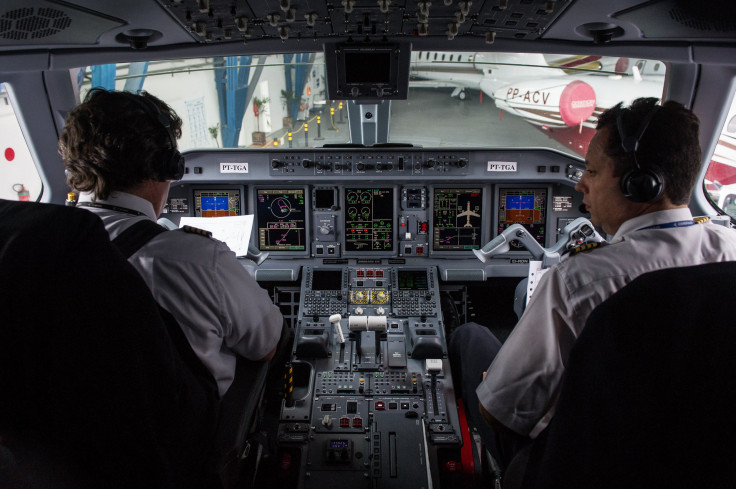Germanwings Flight 9525: How Effective Will The Two-Person Cockpit Rule Be In Preventing Cases Of Rogue Pilots?

Airlines around the world are announcing the adoption of the “two-person” cockpit rule in the wake of the news that Germanwings First Officer Andreas Lubitz locked the captain out of the cockpit before slamming Flight 9525 into a mountain, killing all 150 on board. The U.S. already required its airlines to have two crew members present in the cockpit at all times, while some other countries allow the airlines to set their own policies. Lufthansa, the parent of Germanwings, Virgin Atlantic, Emirates, Air Canada and EasyJet are among many airlines that said they would adopt the “rule of two” effective immediately. But experts caution that this is not the end-all solution to the risk of pilot suicide, which Flight 9525 may have been, and added psychological screening will be necessary.
The rule was originally intended to prevent any problems that might arise if a pilot in the cockpit becomes incapacitated -- from a heart attack or other medical emergency, for example. But the hope is that incidents of pilot suicide in which a pilot deliberately tries to crash an airplane, while rare, will also be prevented with such measures.
“Adopting this rule is the most immediate thing airlines can do. It’s relatively easy and doesn’t cost anything,” said Bill Waldock, professor of aviation safety science at Embry-Riddle Aeronautical University. “It does cut down on the risk because you have somebody else in the cockpit who can open door. But if you have someone committed to taking a plane down, it might not be effective as you’d like it to be.”
The rule seems especially important since 9/11, when airlines reinforced cockpit doors to become nearly impenetrable from the outside. “I think we just demonstrated an example of the law of unintended consequences. We literally made the doors so strong it helped cause what happened in the Germanwings crash,” said Waldock.
William Rantz, professor of aviation science at Western Michigan University’s College of Aviation, said that, based on anecdotal evidence of its implementation in the U.S., it has been effective -- insofar as there have been no cases of pilot suicide.
But if airlines are looking to prevent instances of pilots gone rogue, they will need to do much more than just adopt the two-person rule.
“Airlines don’t do a very good job of psychiatric screening of pilots, and they almost never look at it again after hire. I think we’re going to see that change pretty fast,” said Waldock. He suggested that they might need to adopt practices like those of the military, which require personnel to be screened both for physical and psychological conditions on a regular basis.
Rantz agrees, though he suspects that even just adding screenings may not be a perfect solution. “Recurrent screening is the challenge for the future. But a one-time screening might not catch what is difficult to diagnose in the first place,” said Rantz. “And while it’s hard to mask physiological things like blood pressure, mental health issues are different.”
Airlines could make it a requirement of pilots to waive their medical privacy rights to their employers, allowing airlines access to their employees’ full medical records. But “there’s a fine line between how much privacy we give up in the name of security,” said Waldock. “I don’t think there’s any perfect solution to something like this.”
© Copyright IBTimes 2024. All rights reserved.





















